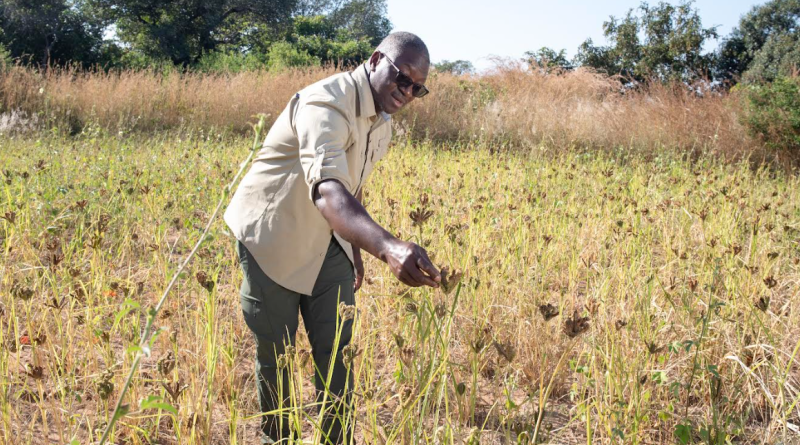Seeking Solutions to Africa’s Climate Struggles

A couple of weeks ago, I traveled from my current home in Seattle to the community in Zimbabwe where I grew up—and where my 85-year-old mother still manages the family farm that once supported her 11 children. The contrast between the lush greenery of North America’s Pacific Northwest and the parched fields of Zimbabwe was dramatic. A severe drought had desiccated crops across much of southern Africa, prompting Zimbabwe’s government to declare a national disaster and appeal for US $2 billion dollars in food aid.
I left Zimbabwe for Nairobi to attend the African Fertilizer and Soil Health Summit, only to encounter yet another manifestation of climate change. Intense rains were falling just outside our meeting rooms, part of an unusually prolonged rainy period causing flooding across the country. It brought ruin to farms still recovering from a devastating four-year drought that lasted into 2023.
At the summit, we discussed how climate change makes it even harder to deal with the problem we had come to Nairobi to confront: that production of staple crops like maize, rice, beans and cassava are far below their potential because the continent’s soils are often starved of basic plant nutrients. Drought magnifies the problem by turning rich farmlands into lifeless deserts, while relentless rains wash away the top, nutrient-rich layer of soil.
Talking with my mom and her neighbors in Zimbabwe and with my colleagues in Kenya confirmed what I already knew, which is that climate change has become the dominant force behind Africa’s food challenges. And while today’s climate crises are prompting international appeals for food aid, the long-term solution is to help African farmers adapt. This means giving them access to innovations like stress-tolerant food crops, better climate forecasts, and new ways to maintain healthy soils. Then, encounters with climate extremes, which inevitably will become more common, are much less likely to unleash a national or regional humanitarian crisis.
Sometimes, adaptation involves relatively simple practices. For example, my mom mixes beans with her maize crops because beans naturally infuse the soil with plant nutrients, with a shorter growing season (60-80 days versus 100-150 days). Her farm has fared better in the current drought than many others because crops cultivated in healthy soil are not as vulnerable to drought conditions. There are also new varieties of drought-tolerant maize developed specifically for African farmers, along with improved varieties of popular but neglected local food crops like millets, cassava, pigeon pea and sweet potatoes, all of which are naturally suited to hot, dry climates.
Similar efforts are helping small-scale farming families protect their livestock from climate-related threats. In East Africa, a partnership with small-scale dairy farmers helps farmers select and then breed hardy, healthy cows and cultivate new varieties of tough, indigenous forage grasses.
We can take advantage of advances in long-range climate forecasts to help African farmers anticipate and navigate shifting weather patterns. A partnership with Kenya’s national agricultural research organization is integrating data from a number of sources, including a new constellation of weather-monitoring satellites, to advise farmers via text messages on when to plant and what to plant, based on how much rain to expect and the timing of its arrival.
Africa is fortunate to have a wealth of national agricultural research organizations staffed by experts with deep roots in local farming communities, who have collaborated for decades with a global research partnership to address the needs of African farmers. They are now working together to ensure climate-related innovations that specifically address local needs are available. For example, a new drought and pest-resistant bean variety has been widely adopted in Uganda because it conforms to the size and color local farmers prefer.
African agriculture experts have played a central role in developing a plan, backed by a growing international coalition, to rapidly support hundreds of millions of small-scale farmers around the world with what they need to adapt. The cost of implementing it is likely less than dealing with the immediate food impacts of a single climate event.
As I saw at the summit in Nairobi, African leaders do understand the urgency of the moment. While they came to Kenya to develop a plan for revitalizing African soils, the rising flood waters across the country—and stories of drought-induced food shortages in southern Africa—offered a vivid reminder that this work must occur in the broader context of building resilience to climate change.
These leaders must ensure farmers and agricultural innovators have the resources they need to tackle extreme conditions. But African countries cannot fend off the food impacts of climate change by themselves—and nor should they. All of Africa accounts for only about four percent of global greenhouse gas emissions, yet climate change is accelerating faster in Africa than anywhere in the world.
It’s said that every crisis is an opportunity. It’s time for the world to look at the latest climate-related food crises unfolding in Africa as an opportunity to embrace climate adaptation as the antidote to climate disaster.




